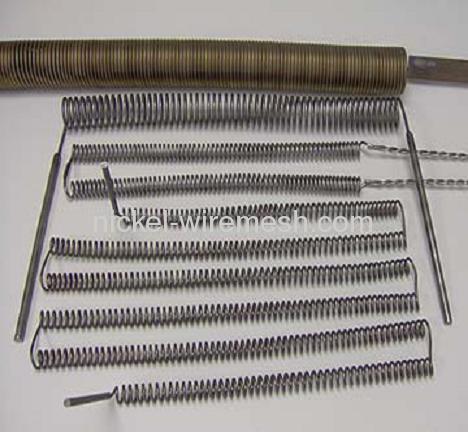You are here: home > Learning Gallery > Resistance Wire's Surface Area Loading
Product (738)
- Pure Nickel Products (38)
- Incoloy Products (74)
- Inconel Products (72)
-
FeCrAl Product
(99)

-
Nichrome Products
(68)

- Monel Products (36)
- Hastelloy Products (49)
- Nickel Iron Alloy Product (59)
-
Nickel Copper alloys
(47)

- Nonferrous Metal Product (27)
-
Resistance Wire
(90)

- Stainless Steel Product (42)
- Mesh Demister (20)
- Others (17)
Product Forms (14)
Quality Certificate (11)
Learning Gallery (30)
Incoloy News (9)
Inconel News (22)
Molybdenum News (7)
Nikrothal News (4)
Nichrome News (13)
Titanium News (2)
Nickel News (8)
Alloys House (30)
Tools (27)
Nickel alloy News (30)
Latest Buzz (30)
nickel chrome copper iron alloys news (28)
Credit Report
Products Index
Company Info
Heanjia Super-metals Co., Ltd. [China (Mainland)]
Business Type:Manufacturer, Trading Company
City: Beijing
Province/State: Beijing
Country/Region: China (Mainland)
Learning Gallery
Resistance Wire's Surface Area Loading

Surface Area Loading
Surface Area Loading is the electric power per unit surface area. The suitable surface loading is related with the material, size, structure, working temperature, abstraction of heat. While there is a difference on surface loading between industrial furnace and home appliance, so we can't define a general value.
To make our clients much easier to design their industrial furnace, Xinxing Nickel Wire Mesh Factory engineers here attach the below figure shows the relation between furnace temperature and element surface loading. The following data is applicable for FeCrAl 0Cr23Al5, 0Cr25Al5 and NiChrome 80/20 and NiChrome 60/15.
Usually strip heating elements has a higher surface loading than wire heating elements.
Electric heating appliance no matter for industry or home, there are three kinds of methods to install the resistance heating wire. First is "embedded". The heating element is embedded in insulation materials. The heating element can't be moved or out of shape, and can't be easily oxidized neither. The surface loading will be 1-80W/cm2 under this situation. Second is "supporting". The heating coil is put on the surface or groove of fire proof material. The heating element can be stretched and distorted in shape. At this environment, its surface loading is 1-10 W/cm2. The third method is "hanging". The heating element is hanging between insulation supporting place. The heating element can be out of shape because of its own weight. The surface loading is 3-15 W/cm2.


Pre Page:
Increase Resistance Wire's Service Life
Next Page:
Comparison of Nichrome Ni80Cr20, Nickel...



